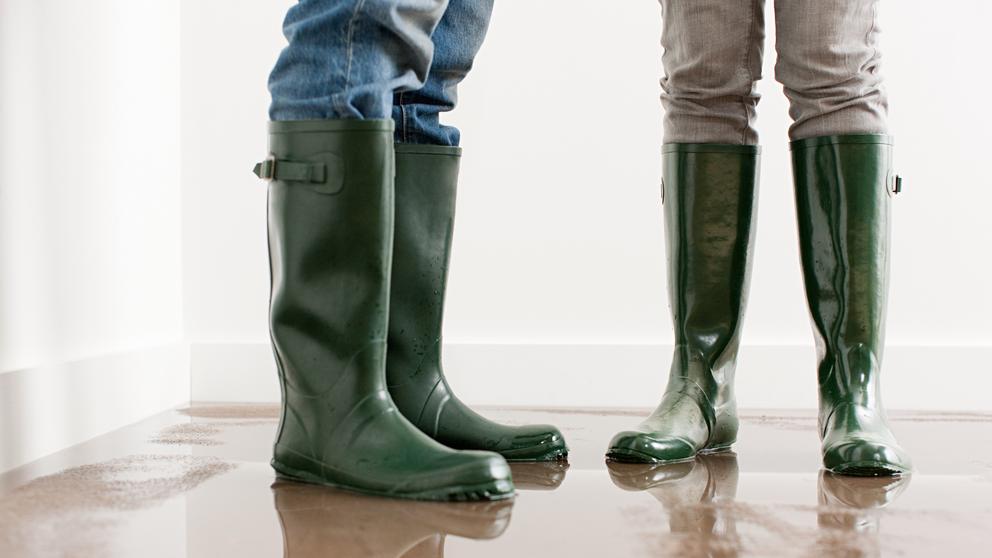
Roofers are in high demand and can make good money.
But roofing has its risks, some of which can financially devastate your roofing company if you aren’t properly insured.
According to the Bureau of Labor Statistics, roofers have some of the highest rates of occupational injury, illness and death compared to other jobs. You must also contend with property damage, both at job sites and during supply deliveries.
If you’re an experienced roofer, you know insurance is key to managing your risk and protecting your business from property damage, liability claims and work-related accidents. You may even have been asked to submit proof of workers’ compensation, property and general liability insurance to obtain your license.
Whether you’re a seasoned contractor or just getting started, it’s important to work with an insurance professional who knows your business. They can help you choose the right coverage for your company.
Before you call your agent, here are some important coverages to know about.
Commercial general liability
As a contractor, you can be held liable for property damage or injuries that occur in the course of your work at a client’s house or job site. For example, you could face a costly claim if:
- A customer trips on a ladder.
- A bundle of shingles falls off a roof.
- An improper installation causes damages.
Commercial general liability (CGL) insurance protects you against financial losses from property damage, bodily injury, medical expenses, and advertising and personal injury stemming from the operation of your business. It covers your work on someone else’s property and losses that happen on your company’s premises. CGL also protects you against personal injury such as copyright infringement, misleading advertising, libel, slander and use of another’s intellectual property.
CGL insurers offer different coverage limits, depending on your risk and the size of your business. A policy with a $1 million limit would pay up to $1 million in legal expenses and damages during the period of coverage (usually one year).
However, CGL won’t cover bodily injury if one of your employees is injured on the job. For that, you’ll need workers’ compensation insurance.
CGL doesn’t cover professional liability or employment practices liability claims, either. Professional liability refers to bodily injury and property damage claims arising from your professional errors, omissions or negligence. Employment practices liability refers to employment-related claims against your business, such as discrimination, wrongful termination, sexual harassment and retaliation. You can purchase these additional liability coverages separately or include them in a bundled policy.
Even if your state doesn’t require you to carry CGL, most general contractors and project owners will ask for proof of coverage before signing a contract. CGL coverage is also usually required if you want to open a bank line of credit, qualify for a loan or rent space. It’s often thought of as the most important coverage for business owners. That’s because one expensive lawsuit could spell the end of your company if you aren’t adequately insured.
Workers’ compensation
As you might imagine, workers’ compensation is an important coverage for roofers. Workers’ comp helps your employees if they get sick or are injured on the job. It pays for lost wages and covers medical and rehabilitation expenses while the employee recovers. Unless you’re a sole proprietor, your state probably requires you to carry it. You may also be required to furnish proof of workers’ comp coverage to maintain your license.
The type of industry you work in, the number of employees you have and your claims experience will determine availability and coverage costs. High-risk trades such as roofing are often hard to insure, especially if you’ve had a recent claim or you’re just starting your business.
If you’re having trouble finding coverage in the standard workers’ comp market, you may need to buy insurance through an assigned risk pool. Government-run risk pools are an alternative source of coverage for employers who have been declined because of high risk or too many claims. An insurance professional who specializes in workers’ comp can help you find coverage in the assigned-risk market.
Property insurance
Your business property, vehicles, equipment and tools need to be insured as well. This includes any building materials you store on your premises or deliver to customers’ homes or job sites.
Commercial property insurance covers the property located at your business address. It protects against fires, theft, vandalism and various weather-related perils. However, it doesn’t cover floods or earthquakes, which usually require separate policies. Note that most commercial property policies do not cover property transported or stored off-site. For that, you’ll need inland marine insurance.
Inland marine insurance is designed for contractors who transport equipment, tools or materials to job sites and store them there. This is especially important for roofers, who have shingles and other roofing materials delivered to job sites and transport everything they need for the job on their truck.
Commercial auto insurance is required for company-owned vehicles. Much like a personal auto policy, it covers liability, bodily injury and property damage. If your workers use their own vehicles for jobs, you should also consider “nonowned auto” coverage. Personal auto policies often don’t cover vehicles damaged during business use.
BOPs bundle the coverage you need
Business owner policies (BOPs) bundle many of the commercial coverages you need. Most BOPs include CGL, commercial property and business interruption insurance. Business interruption insurance compensates you if your business has to temporarily halt its operations due to a covered loss.
Another type of bundled policy, called a commercial package policy (CPP), gives you more flexibility to design the coverage you want. Your insurance professional can help you decide if it’s better to bundle your insurance or purchase the policies you need separately.
Large construction projects involving multiple subcontractors may have a controlled insurance program (CIP), known as a wrap-up. The project owner or general contractor purchases the policy, which wraps up all of the insurance everyone working on the job needs. CIPs usually include CGL and workers’ comp. You may be able to add coverage as well. Your agent or broker can review your CIP policy and contracts to prevent insurance gaps.
There are plenty of jobs for good roofers, but having a lot of work poses its own set of challenges: scheduling jobs, supervising crews, securing materials and meeting deadlines. In the rush to get everything done, don’t neglect your insurance needs. Manage your risks by making sure your business is adequately insured.
Learn More
To learn more about managing your risks as a roofing contractor, reach out to Brett Findlay at BFindlay@OneGroup.com.
This content is for informational purposes only and not for the purpose of providing professional, financial, medical or legal advice. You should contact your licensed professional to obtain advice with respect to any particular issue or problem. Please refer to your policy contract for any specific information or questions on applicability of coverage.
Please note coverage can not be bound or a claim reported without written acknowledgment from a OneGroup Representative.
Written content in blog post: Copyright © 2024 Applied Systems, Inc. All rights reserved.
Find this Article Helpful?
Visit our Library of Resources for More!

ONEGROUP EXPERTS ARE READY TO HELP
Fill out the form below and an expert from OneGroup will contact you.
For Immediate assistance call 1-800-268-1830
Coverage cannot be bound or altered and a claim cannot be reported without confirmation from a representative of OneGroup.









